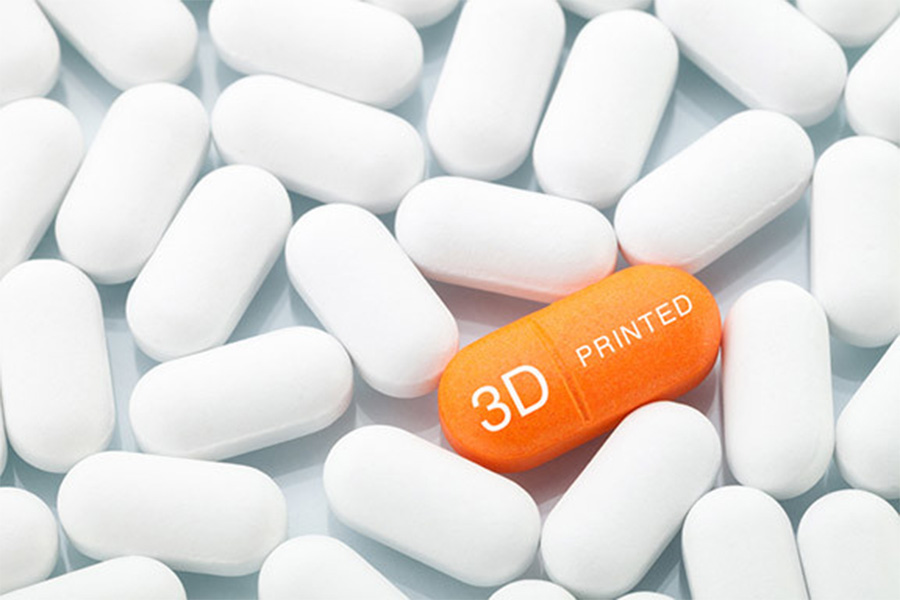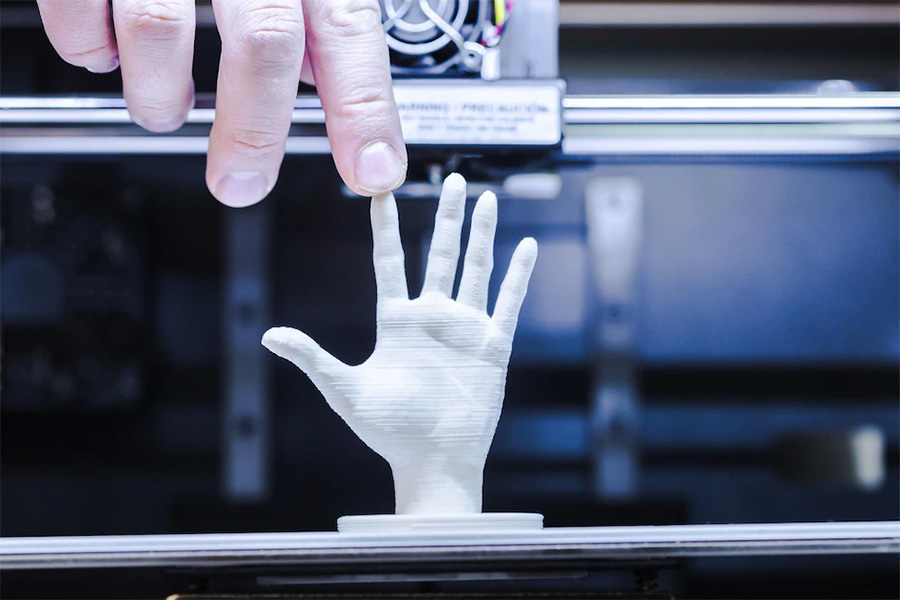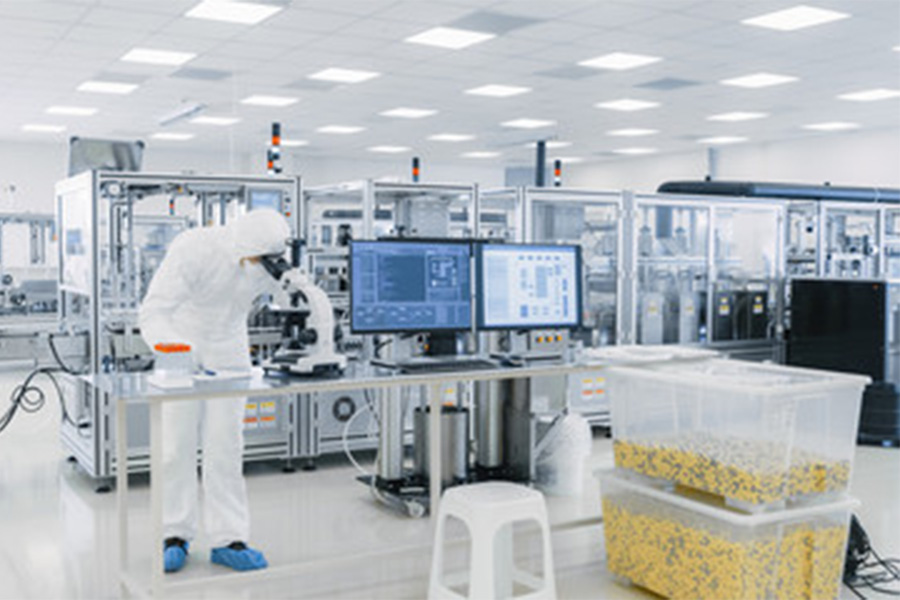Defining the Future of Pharmacy: 3D Printing Integration
Pharmaceutical industry deals with the discovery, development, and manufacture of drugs and medications (pharmaceuticals) by public and private organizations. The term “Pharmacy” was coined long back in the ancient times. The oldest records of medicinal preparations made from plants, animals, or minerals are those of the early Chinese, Hindu, and Mediterranean civilizations with written history records of 1st century. Many plant-derived medications employed by the ancients are still in use today.

The Pharmaceutical industry is a rapidly growing field with the development of
new technologies and enhancement of the existing methodologies. From development of Synthetic drugs to Orphan drugs the industry
has grown to extreme heights with wings stretched on research and innovative activities. There have been several discoveries and
introductions to major outcomes like penicillin, vaccines to pandemic diseases, Oral-based birth control pills and Aspirin. There
have been platforms that have paved the way for AI and technological advancements into the Pharmaceutical Industry. Since then there
has been no turning back and have created paths for greater innovations in the manufacturing of medicines and treatments to the patients. One such invention in the industry along with the help of AI is the famously known 3D Printing.
3D Printing in Pharmaceutical Industry
3D Printing is a technology also known as Additive Manufacturing that combines material science and engineering.
Material is deposited layer by layer to give rise to a three-dimensional object, following a digital input file containing a model
of the object we intend to produce. When it comes to medicine, there are four core uses of 3D Printing – printing tissues and organoids,
making precision surgical tools, developing patient-specific surgical models as well as prosthetics.
3D Printing technologies are more established in areas like artificial skin transplants,
surgical models, and prosthetics, but current research and improvements to the technology are ushering in a new addition to
pharmaceutical manufacturing as well. 3D printing in medicine and healthcare could revolutionize drug creation and the production of
medical equipment. It could also offer new methods for practicing medicine, optimizing supply chains, and propose cheaper and way more
personalized medical services.
3D printing in medicine can also be a lifesaver – as it saved a life of a baby in the United States. Kaiba Gionfriddo was born prematurely in 2011 and suffered from tracheobronchomalacia – a congenital disability that causes the windpipe to collapse. He had a tracheotomy and was put on a ventilator––the conventional treatment. Still, Kaiba would stop breathing almost daily. His heart would stop, too. His caregivers 3D printed a bioresorbable device that instantly helped Kaiba breathe. After the operation, Kaiba’s trachea has gradually reconstructed itself. His body reabsorbed the inserted splint. A year later, the tube was also removed without causing any harm.
Australian scientists 3D printed a set of micro needles for effective diabetes monitoring. These minimally invasive and minimally painful needles offer an effective way for continuous glucose monitoring – and opens up the path towards personalized medicine and drug intake itself.
.png)
3D printing of medical equipment also played a significant role at the beginning of the COVID-19 pandemic. Urgent 3D production of especially personal protective equipment was literally saving lives for hospital personnel. In fact, 3D printing became a vital technology, supporting hospitals and front liners. Community-based maker spaces offered freely accessible 3D blueprints helping the rapid response to the pandemic.
3D printing can also help medical research and the outcome of complex operations and particularly challenging cases. Researchers in China and the US have both 3D printed models of cancerous tumors to aid the discovery of new anti-cancer drugs and to better understand how tumors develop, grow, and spread.
NGOs like Refugee Open Ware and Not Impossible are also helping people in need with 3D printing in medicine. They create 3D-print prosthetics for refugees from war-torn areas. Not Impossible, for example, took 3D printers to Sudan, where the chaos of war has left many people with amputated limbs.
Motivations for 3D printing medicines
The potential to personalize therapies in an automated and decentralized manner means that 3D printing provides various
opportunities to patients, pharmacists, clinicians and the pharmaceutical industry alike. It could prove beneficial
to patients as the major benefit of 3D printing medicines is the ability to truly personalize a treatment based on a patient’s
therapeutic or individual requirements.
Several studies have focused on producing child-acceptable formulations using 3D printing, including the production of chewable and even chocolate-based formulations.
3D printing offers an eco-friendly method of medicines manufacture; formulations can be produced with little or no drug and excipient wastage, reducing costs particularly for highly expensive drugs.
.png)
3D printing technologies pose many benefits to the pharmaceutical industry, especially within early phase drug development. There is an urgent need to reduce time and cost to market to expedite drug development timelines, made evident during the recent COVID-19 pandemic requiring rapid drug development and repurposing trials. Moreover, 3D printing could be utilized throughout pre-clinical and early phase clinical trials to produce small batches of dose flexible drug products on demand to evaluate safety and efficacy.
Pharmaceutical companies could use 3D printing to formulate medicines on demand in decentralized locations, such as within pharmacies, clinics or even the patient’s home. Furthermore, this could enable pharmaceutical companies to drive down transport costs and overall logistics expenses, in turn reducing the carbon footprint associated with transport and avoiding the need for energy-intensive storage conditions, such as cold-chain storage for thermo sensitive drugs.
Lying ahead of Time: 3D printed drugs
3D printing in medicine is one of the most disruptive technologies that truly have the potential to change medicine and healthcare by making care affordable, accessible and personalized. It can bring a new era if printers become more sophisticated, printing biomaterials gets safely regulated and the general public acquires a common sense about how 3D printing works. There are many published research papers demonstrating the potential and role of 3D printing technologies for medicines manufacture and patient care.

3D printing has the potential to revolutionize clinical pharmacy practice. It can transition conventional means of medicine mass manufacture towards the production of small batches of highly flexible and personalized dosage forms on-demand. This technology provides benefits for patients, pharmacists and the pharmaceutical industry alike by providing unique advantages such as making treatments safer and more effective. Healthcare professionals, including pharmacists, doctors, and nurses, are of paramount importance in enabling the integration of this technology and will be key to advising academics, the pharmaceutical industry and biotech companies on strategies to innovate the sector using 3D printing.











.png)
.png)

